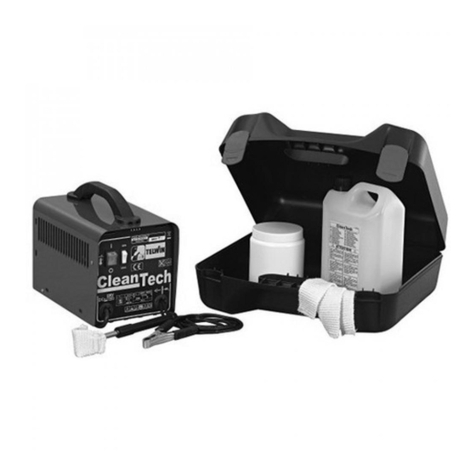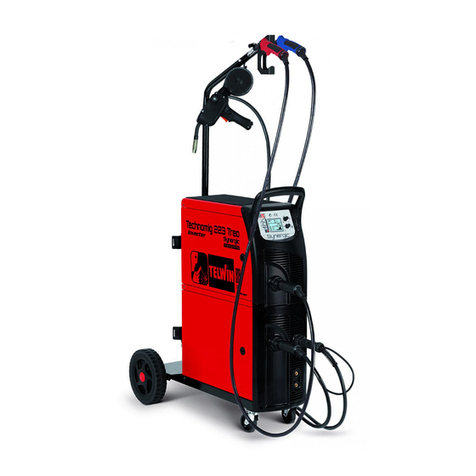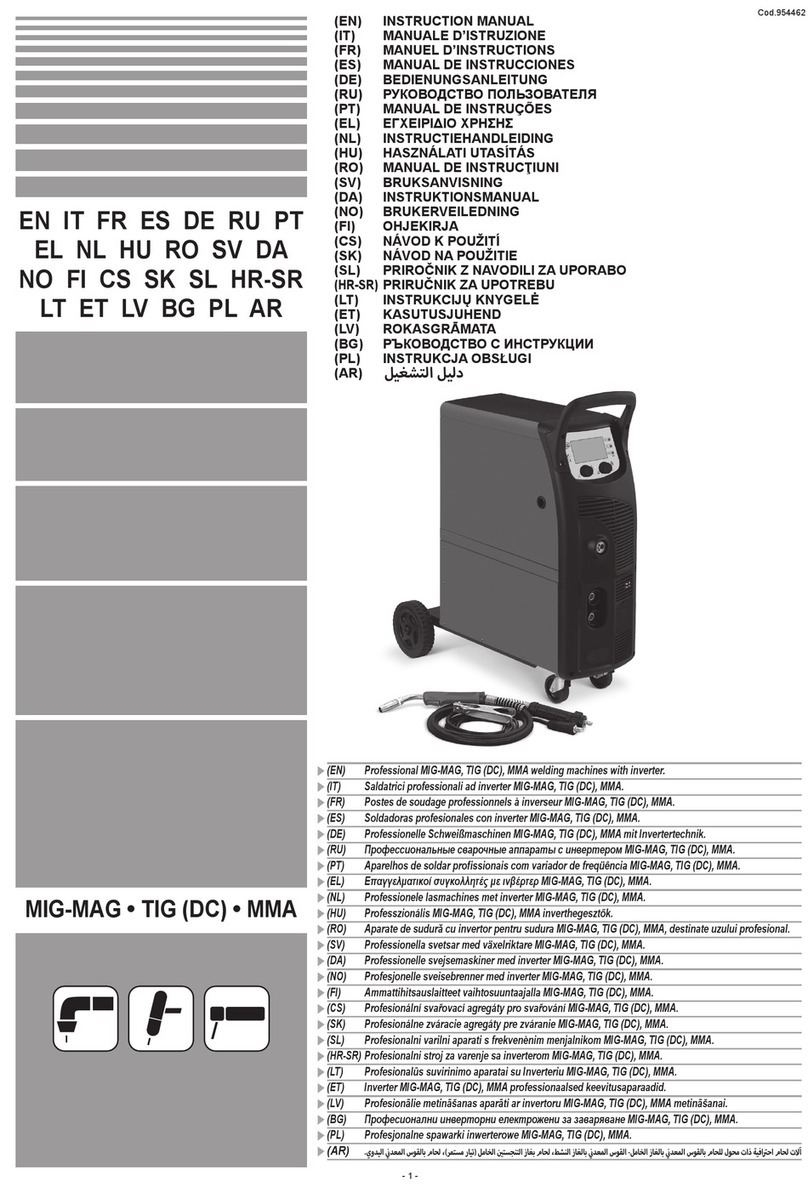- 3 -
(EN) NO ENTRY FOR UNAUTHORISED PERSONNEL - (IT) DIVIETO DIACCESSO ALLE PERSONE NONAUTORIZZATE - (FR) ACCÈS INTERDITAUX PERSONNES NON
AUTORISÉES - (ES) PROHIBIDO EL ACCESO A PERSONAS NO AUTORIZADAS - (DE) UNBEFUGTEN PERSONEN IST DER ZUTRITT VERBOTEN - (RU) ЗАПРЕТ ДЛЯ
ДОСТУПАПОСТОРОННИХЛИЦ-(PT)PROIBIÇÃODEACESSOÀSPESSOASNÃOAUTORIZADAS-(EL)ΑΠΑΓΟΡΕΥΣΗΠΡΟΣΒΑΣΗΣΣΕΜΗΕΠΙΤΕΤΡΑΜΕΝΑΑΤΟΜΑ-(NL)
TOEGANGSVERBODVOORNIETGEAUTORISEERDEPERSONEN-(HU)FELNEMJOGOSÍTOTTSZEMÉLYEKSZÁMÁRATILOSABELÉPÉS-(RO)ACCESULPERSOANELOR
NEAUTORIZATEESTEINTERZIS-(SV)TILLTRÄDEFÖRBJUDETFÖRICKEAUKTORISERADEPERSONER-(DA)ADGANGFORBUDTFORUVEDKOMMENDE-(NO)PERSONER
SOMIKKEERAUTORISERTEMÅIKKEHAADGANGTILAPPARATEN-(FI)PÄÄSYKIELLETTYASIATTOMILTA-(CS)ZÁKAZVSTUPUNEPOVOLANÝMOSOBÁM-(SK)ZÁKAZ
NEOPRÁVNENÉHO PRÍSTUPU K OSÔB - (SL) DOSTOP PREPOVEDAN NEPOOBLAŠČENIM OSEBAM - (HR-SR) ZABRANA PRISTUPA NEOVLAŠTENIM OSOBAMA - (LT)
PAŠALINIAMSĮEITIDRAUDŽIAMA-(ET)SELLEKSVOLITAMATAISIKUTELONTÖÖALASVIIBIMINEKEELATUD-(LV)NEPIEDEROŠĀMPERSONĀMIEEJAAIZLIEGTA-(BG)
ЗАБРАНЕНЕДОСТЪПЪТНАНЕУПЪЛНОМОЩЕНИЛИЦА-(PL)ZAKAZDOSTĘPUOSOBOMNIEUPOWAŻNIONYM.
(EN)WEARINGAPROTECTIVEMASKISCOMPULSORY-(IT)OBBLIGOUSAREMASCHERAPROTETTIVA-(FR)PORTDUMASQUEDEPROTECTIONOBLIGATOIRE-(ES)
OBLIGACIÓN DE USAR MÁSCARA DE PROTECCIÓN - (DE) DER GEBRAUCH EINER SCHUTZMASKE IST PFLICHT - (RU) ОБЯЗАННОСТЬ ПОЛЬЗОВАТЬСЯ ЗАЩИТНОЙ
МАСКОЙ-(PT)OBRIGATÓRIOOUSODEMÁSCARADEPROTEÇÃO-(EL)ΥΠΟΧΡΕΩΣΗΝΑΦΟΡΑΤΕΠΡΟΣΤΑΤΕΥΤΙΚΗΜΑΣΚΑ-(NL)VERPLICHTGEBRUIKVANBESCHERMEND
MASKER-(HU)VÉDŐMASZKHASZNÁLATAKÖTELEZŐ-(RO)FOLOSIREAMĂŞTIIDEPROTECŢIEOBLIGATORIE-(SV)OBLIGATORISKTATTBÄRASKYDDSMASK-(DA)
PLIGT TILATANVENDE BESKYTTELSESMASKE - (NO) FORPLIKTELSE Å BRUKE VERNEBRILLER - (FI) SUOJAMASKIN KÄYTTÖ PAKOLLISTA - (CS) POVINNÉ POUŽITÍ
OCHRANNÉHOŠTÍTU-(SK)POVINNÉPOUŽITIEOCHRANNÉHOŠTÍTU-(SL)OBVEZNOSTUPORABIZAŠČITNEMASKE-(HR-SR)OBAVEZNOKORIŠTENJEZAŠTITNEMASKE
- (LT) PRIVALOMA UŽSIDĖTI APSAUGINĘ KAUKĘ - (ET) KOHUSTUSLIK KANDA KAITSEMASKI - (LV) PIENĀKUMS IZMANTOTAIZSARGMASKU - (BG) ЗАДЪЛЖИТЕЛНО
ИЗПОЛЗВАНЕНАПРЕДПАЗНАЗАВАРЪЧНАМАСКА.-(PL)NAKAZUŻYWANIAMASKIOCHRONNEJ.
(EN) USERS OF VITAL ELECTRICAL AND ELECTRONIC APPARATUS MUST NEVER USE THE MACHINE - (IT) VIETATO L’USO DELLA MACCHINA AI PORTATORI DI
APPARECCHIATURE ELETTRICHE ED ELETTRONICHE VITALI - (FR) L’UTILISATION DE LA MACHINE EST DÉCONSEILLÉE AUX PORTEURS D’APPAREILS ÉLECTRIQUES OU
ÉLECTRONIQUESMÉDICAUX-(ES)PROHIBIDOELUSODELAMÁQUINAALOSPORTADORESDEAPARATOSELÉCTRICOSYELECTRÓNICOSVITALES-(DE)TRÄGERN
LEBENSERHALTENDER ELEKTRISCHER UND ELEKTRONISCHER GERÄTE IST DER GEBRAUCH DER MASCHINE UNTERSAGT - (RU) ИСПОЛЬЗОВАНИЕ УСТАНОВКИ
ЗАПРЕЩЕНОЛИЦАМ,ИСПОЛЬЗУЮЩИМЭЛЕКТРОННУЮИЭЛЕКТРОАППАРАТУРУОБЕСПЕЧЕНИЯЖИЗНЕДЕЯТЕЛЬНОСТИ-(PT)ÉPROIBIDOOUSODAMÁQUINAAOS
PORTADORESDEAPARELHAGENSELÉCTRICASEELECTRÓNICASVITAIS-(EL)ΑΠΑΓΟΡΕΥΕΤΑΙΗΧΡΗΣΗΤΟΥΜΗΧΑΝΗΜΑΤΟΣΣΕΑΤΟΜΑΠΟΥΦΕΡΟΥΝΗΛΕΚΤΡΙΚΕΣ
ΚΑΙΗΛΕΚΤΡΟΝΙΚΕΣΣΥΣΚΕΥΕΣΖΩΤΙΚΗΣΣΗΜΑΣΙΑΣ-(NL)HETGEBRUIKVANDEMACHINEISVERBODENAANDRAGERSVANELEKTRISCHEENELEKTRONISCHEVITALE
APPARATUUR-(HU)TILOSAGÉPHASZNÁLATAMINDAZOKSZÁMÁRA,AKIKSZERVEZETÉBENÉLETFENNTARTÓELEKTROMOSVAGYELEKTRONIKUSKÉSZÜLÉKVAN
BEÉPÍTVE-(RO)SEINTERZICEFOLOSIREAMAŞINIIDECĂTREPERSOANELEPURTĂTOAREDEAPARATEELECTRICEŞIELECTRONICEVITALE-(SV)FÖRBJUDETFÖR
ANVÄNDAREAVLIVSUPPEHÅLLANDEELEKTRISKAELLERELEKTRONISKAAPPARATERATTANVÄNDADENNAMASKIN-(DA)DETERFORBUDTFORPERSONER,DER
ANVENDER LIVSVIGTIGT ELEKTRISK OG ELEKTRONISK APPARATUR, AT ANVENDE MASKINEN - (NO) DET ER FORBUDT FOR PERSONER SOM BRUKER LIVSVIKTIGE
ELEKTRISKEELLERELEKTRONISKEAPPARATERÅBRUKEMASKINEN-(FI)KONEENKÄYTTÖKIELTOSÄHKÖISTENJAELEKTRONISTENHENKILÖNSUOJALAITTEIDEN
KÄYTTÄJILLE - (CS) ZÁKAZ POUŽITÍ STROJE NOSITELŮM ELEKTRICKÝCH A ELEKTRONICKÝCH ŽIVOTNĚ DŮLEŽITÝCH ZAŘÍZENÍ - (SK) ZÁKAZ POUŽÍVANIA STROJA
OSOBÁM SO ŽIVOTNE DÔLEŽITÝMI ELEKTRICKÝMI A ELEKTRONICKÝMI ZARIADENIAMI - (SL) PREPOVEDANA UPORABA STROJA ZA UPORABNIKE ŽIVLJENJSKO
POMEMBNIHELEKTRIČNIHINELEKTRONSKIHNAPRAV-(HR-SR)ZABRANJENOJEUPOTREBLJAVATISTROJOSOBAMAKOJEIMAJUUGRAĐENEVITALNEELEKTRIČNEILI
ELEKTRONIČKEUREĐAJE-(LT)GRIEŽTAIDRAUDŽIAMASUĮRANGADIRBTIASMENIMS,BESINAUDOJANTIEMSGYVYBIŠKAISVARBIAISELEKTRINIAISARELEKTRONINIAIS
PRIETAISAIS - (ET) SEADET EI TOHI KASUTADA ISIKUD, KES KASUTAVAD MEDITSIINILISI ELEKTRI-JA ELEKTROONIKASEADMEID - (LV) ELEKTRISKO VAI ELEKTRONISKO
MEDICĪNISKOIERĪČULIETOTĀJIEMIRAIZLIEGTSIZMANTOTMAŠĪNU-(BG)ЗАБРАНЕНОЕПОЛЗВАНЕТОНАМАШИНАТАОТЛИЦА,НОСИТЕЛИНАЕЛЕКТРИЧЕСКИИ
ЕЛЕКТРОННИМЕДИЦИНСКИУСТРОЙСТВА-(PL)ZABRONIONEJESTUŻYWANIEURZĄDZENIAOSOBOMSTOSUJĄCYMELEKTRYCZNEIELEKTRONICZNEURZĄDZENIA
WSPOMAGAJĄCEFUNKCJEŻYCIOWE.
(EN)PEOPLEWITHMETALPROSTHESESARENOTALLOWEDTOUSETHEMACHINE-(IT)VIETATOL’USODELLAMACCHINAAIPORTATORIDIPROTESIMETALLICHE-(FR)
UTILISATIONINTERDITEDELAMACHINEAUXPORTEURSDEPROTHÈSESMÉTALLIQUES-(ES)PROHIBIDOELUSODELAMÁQUINAALOSPORTADORESDEPRÓTESIS
METÁLICAS-(DE)TRÄGERNVONMETALLPROTHESENISTDERUMGANGMITDERMASCHINEVERBOTEN-(RU)ИСПОЛЬЗОВАНИЕМАШИНЫЗАПРЕЩАЕТСЯЛЮДЯМ,
ИМЕЮЩИМ МЕТАЛЛИЧЕСКИЕ ПРОТЕЗЫ - (PT) PROIBIDO O USO DA MÁQUINAAOS PORTADORES DE PRÓTESES METÁLICAS - (EL)ΑΠΑΓΟΡΕΥΕΤΑΙ Η ΧΡΗΣΗ ΤΗΣ
ΜΗΧΑΝΗΣΣΕΑΤΟΜΑΠΟΥΦΕΡΟΥΝΜΕΤΑΛΛΙΚΕΣΠΡΟΣΘΗΚΕΣ-(NL)HETGEBRUIKVANDEMACHINEISVERBODENAANDEDRAGERSVANMETALENPROTHESEN-(HU)
TILOSAGÉPHASZNÁLATAFÉMPROTÉZISTVISELŐSZEMÉLYEKSZÁMÁRA-(RO)SEINTERZICEFOLOSIREAMAŞINIIDECĂTREPERSOANELEPURTĂTOAREDEPROTEZE
METALICE-(SV)FÖRBJUDETFÖRPERSONERSOMBÄRMETALLPROTESATTANVÄNDAMASKINEN-(DA)DETERFORBUDTFORPERSONERMEDMETALPROTESERAT
BENYTTEMASKINEN-(NO)BRUKAVMASKINENERIKKETILLATTFORPERSONERMEDMETALLPROTESER-(FI)KONEENKÄYTTÖKIELLETTYMETALLIPROTEESIEN
KANTAJILTA-(CS)ZÁKAZPOUŽITÍSTROJENOSITELŮMKOVOVÝCHPROTÉZ-(SK)ZÁKAZPOUŽITIASTROJAOSOBÁMSKOVOVÝMIPROTÉZAMI-(SL)PREPOVEDANA
UPORABA STROJA ZA NOSILCE KOVINSKIH PROTEZ - (HR-SR) ZABRANJENA UPOTREBA STROJA OSOBAMA KOJE NOSE METALNE PROTEZE - (LT) SU SUVIRINIMO
APARATUDRAUDŽIAMADIRBTIASMENIMS,NAUDOJANTIEMSMETALINIUSPROTEZUS-(ET)SEADETEITOHIKASUTADAISIKUD,KESKASUTAVADMETALLPROTEESE
-(LV)CILVĒKIEMARMETĀLAPROTĒZĒMIRAIZLIEGTSLIETOTIERĪCI-(BG)ЗАБРАНЕНАЕУПОТРЕБАТАНАМАШИНАТАОТНОСИТЕЛИНАМЕТАЛНИПРОТЕЗИ-(PL)
ZAKAZUŻYWANIAURZĄDZENIAOSOBOMSTOSUJĄCYMPROTEZYMETALOWE.
(EN)DONOTWEARORCARRYMETALOBJECTS,WATCHESORMAGNETISEDCARDS-(IT)VIETATOINDOSSAREOGGETTIMETALLICI,OROLOGIESCHEDEMAGNETICHE
- (FR) INTERDICTION DE PORTER DES OBJETS MÉTALLIQUES, MONTRES ET CARTES MAGNÉTIQUES - (ES) PROHIBIDO LLEVAROBJETOS METÁLICOS, RELOJES, Y
TARJETASMAGNÉTICAS-(DE)DASTRAGENVONMETALLOBJEKTEN,UHRENUNDMAGNETKARTENISTVERBOTEN-(RU)ЗАПРЕЩАЕТСЯНОСИТЬМЕТАЛЛИЧЕСКИЕ
ПРЕДМЕТЫ,ЧАСЫИЛИМАГНИТНЫЕПЛАТЫЮ-(PT)PROIBIDOVESTIROBJECTOSMETÁLICOS,RELÓGIOSEFICHASMAGNÉTICAS-(EL)ΑΠΑΓΟΡΕΥΕΤΑΙΝΑΦΟΡΑΤΕ
ΜΕΤΑΛΛΙΚΑ ΑΝΤΙΚΕΙΜΕΝΑ, ΡΟΛΟΓΙΑ ΚΑΙ ΜΑΓΝΗΤΙΚΕΣ ΠΛΑΚΕΤΕΣ - (NL) HET IS VERBODEN METALEN VOORWERPEN, UURWERKEN EN MAGNETISCHE FICHES TE
DRAGEN-(HU)TILOSFÉMTÁRGYAK,KARÓRÁKVISELETEÉSMÁGNESESKÁRTYÁKMAGUKNÁLTARTÁSA-(RO)ESTEINTERZISĂPURTAREAOBIECTELORMETALICE,
A CEASURILOR ŞI A CARTELELOR MAGNETICE - (SV) FÖRBJUDET ATT BÄRA METALLFÖREMÅL, KLOCKOR OCH MAGNETKORT - (DA) FORBUD MOD AT BÆRE
METALGENSTANDE,UREOGMAGNETISKEKORT-(NO)FORBUDTÅHAPÅ SEGMETALLFORMÅL,KLOKKEROGMAGNETISKEKORT-(FI)METALLISTENESINEIDEN,
KELLOJENJAMAGNEETTIKORTTIENMUKANAPITÄMINENKIELLETTY-(CS)ZÁKAZNOŠENÍKOVOVÝCHPŘEDMĚTŮ,HODINEKAMAGNETICKÝCHKARET-(SK)ZÁKAZ
NOSENIAKOVOVÝCHPREDMETOV,HODINIEKAMAGNETICKÝCHKARIET-(SL)PREPOVEDANONOŠENJEKOVINSKIHPREDMETOV,URINMAGNETNIHKARTIC-(HR-SR)
ZABRANJENONOŠENJEMETALNIHPREDMETA,SATOVAIMAGNETSKIHČIPOVA-(LT)DRAUDŽIAMAPRIESAVĘSTURĖTIMETALINIŲDAIKTŲ,LAIKRODŽIŲARMAGNETINIŲ
PLOKŠTELIŲ-(ET)KEELATUDONKANDAMETALLESEMEID,KELLASIDJAMAGENTKAARTE-(LV)IRAIZLIEGTSVILKTMETĀLAPRIEKŠMETUS,PULKSTEŅUSUNŅEMT
LĪDZIMAGNĒTISKĀSKARTES-(BG)ЗАБРАНЕНОЕНОСЕНЕТОНАМЕТАЛНИПРЕДМЕТИ,ЧАСОВНИЦИИМАГНИТНИСХЕМИ-(PL)ZAKAZNOSZENIAPRZEDMIOTÓW
METALOWYCH,ZEGARKÓWIKARTMAGNETYCZNYCH.
(EN)NOTTOBEUSEDBYUNAUTHORISEDPERSONNEL-(IT)VIETATOL’USOALLEPERSONENONAUTORIZZATE-(FR)UTILISATIONINTERDITEAUPERSONNELNON
AUTORISÉ-(ES)PROHIBIDOELUSOAPERSONASNOAUTORIZADAS-(DE)DERGEBRAUCHDURCHUNBEFUGTEPERSONENISTVERBOTEN-(RU)ИСПОЛЬЗОВАНИЕ
ЗАПРЕЩАЕТСЯЛЮДЯМ,НЕИМЕЮЩИМРАЗРЕШЕНИЯ-(PT)PROIBIDOOUSOÀSPESSOASNÃOAUTORIZADAS-(EL)ΑΠΑΓΟΡΕΥΣΗΧΡΗΣΗΣΣΕΜΗΕΠΙΤΕΤΡΑΜΕΝΑ
ΑΤΟΜΑ-(NL)HETGEBRUIKISVERBODENAAN NIET GEAUTORISEERDE PERSONEN - (HU) TILOSAHASZNÁLATAAFEL NEM JOGOSÍTOTTSZEMÉLYEK SZÁMÁRA-
(RO) FOLOSIREA DE CĂTRE PERSOANELE NEAUTORIZATE ESTE INTERZISĂ - (SV) FÖRBJUDET FÖR ICKE AUKTORISERADE PERSONERATT ANVÄNDAAPPARATEN
- (DA) DET ER FORBUDT FOR UVEDKOMMENDE AT ANVENDE MASKINEN - (NO) BRUK ER IKKE TILLATT FOR UAUTORISERTE PERSONER - (FI) KÄYTTÖ KIELLETTY
VALTUUTTAMATTOMILTA HENKILÖILTÄ - (CS) ZÁKAZ POUŽITÍ NEPOVOLANÝM OSOBÁM - (SK) ZÁKAZ POUŽITIA NEPOVOLANÝM OSOBÁM - (SL) NEPOOBLAŠČENIM
OSEBAM UPORABA PREPOVEDANA - (HR-SR) ZABRANJENA UPOTREBA NEOVLAŠTENIM OSOBAMA - (LT) PAŠALINIAMS NAUDOTIS DRAUDŽIAMA - (ET) SELLEKS
VOLITAMATAISIKUTELONSEADMEKASUTAMINEKEELATUD-(LV)NEPILNVAROTĀMPERSONĀMIRAIZLIEGTSIZMANTOTAPARĀTU-(BG)ЗАБРАНЕНОЕПОЛЗВАНЕТО
ОТНЕУПЪЛНОМОЩЕНИЛИЦА-(PL)ZAKAZUŻYWANIAOSOBOMNIEAUTORYZOWANYM.
(EN)Symbolindicatingseparationofelectricalandelectronicappliancesforrefusecollection.Theuserisnotallowedtodisposeoftheseappliances
as solid, mixed urban refuse, and must do it through authorised refuse collection centres. - (IT) Simbolo che indica la raccolta separata delle
apparecchiatureelettricheedelettroniche.L’utentehal’obbligodinonsmaltirequestaapparecchiaturacomeriutomunicipalesolidomisto,madi
rivolgersiaicentridiraccoltaautorizzati.-(FR)Symboleindiquantlacollectedifférenciéedesappareilsélectriquesetélectroniques.L’utilisateurne
peutéliminercesappareilsaveclesdéchetsménagerssolidesmixtes,maisdoits’adresseràuncentredecollecteautorisé.-(ES)Símboloqueindica
larecogidaporseparadodelosaparatoseléctricosyelectrónicos.Elusuariotienelaobligacióndenoeliminaresteaparatocomodesechourbano
sólidomixto,sinodedirigirsealoscentrosderecogidaautorizados.-(DE)SymbolfürdiegetrennteErfassungelektrischerundelektronischerGeräte.
DerBenutzerhatpichtgemäßdafürzusorgen,daßdiesesGerätnichtmitdemgemischterfaßtenfestenSiedlungsabfallentsorgtwird.Stattdessen
mußereinederautorisiertenEntsorgungsstelleneinschalten.-(RU)Символ,указывающийнараздельныйсборэлектрическогоиэлектронного
оборудования.Пользовательнеимеетправавыбрасыватьданноеоборудованиевкачествесмешанноготвердогобытовогоотхода,аобязан
обращатьсявспециализированныецентрысбораотходов.-(PT)Símboloqueindicaareuniãoseparadadasaparelhagenseléctricaseelectrónicas.
Outentetemaobrigaçãodenãoeliminarestaaparelhagemcomolixomunicipalsólidomisto,masdeveprocuraroscentrosderecolhaautorizados.-
(EL)Σύμβολοπουδείχνειτηδιαφοροποιημένησυλλογήτωνηλεκτρικώνκιαηλεκτρονικώνσυσκευών.Οχρήστηςυποχρεούταιναμηνδιοχετεύειαυτή
τησυσκευήσανμικτόστερεόαστικόαπόβλητο,αλλάνααπευθύνεταισεεγκεκριμένακέντρασυλλογής.-(NL)Symbooldatwijstopdegescheiden
inzamelingvanelektrischeenelektronischetoestellen.Degebruikerisverplichtdezetoestellenniettelozenalsgemengdevastestadsafval,maar
moetzichwendentotdegeautoriseerdeophaalcentra.-(HU)Jelölés,melyazelektromoséselektronikusfelszerelésekszelektívhulladékgyűjtését
jelzi.Afelhasználóköteleseztafelszereléstnemavárositörmelékhulladékkalegyüttesengyűjteni,hanemerreengedéllyelrendelkezőhulladékgyűjtő
központhozfordulni.-(RO)Simbolceindicădepozitareaseparatăaaparatelorelectriceşielectronice.Utilizatorulesteobligatsănudepozitezeacest
aparatîmpreunăcu deşeurile solidemixteci să-l predeaîntr-uncentru de depozitareadeşeurilor autorizat. -(SV)Symbol som indikerarseparat
sopsorteringavelektriskaochelektroniskaapparater.Användarenfårintesorteradennaanordningtillsammansmedblandatfasthushållsavfall,utan
måstevändasigtillenauktoriseradinsamlingsstation.-(DA)Symbol,derstårforsærligindsamlingafelektriskeogelektroniskeapparater.Brugeren
harpligttilikkeatbortskaffedetteapparatsomblandet,fastbyaffald;derskalretteshenvendelsetiletautoriseretindsamlingscenter.-(NO)Symbol
somangirseparatsorteringavelektriskeogelektroniskeapparater.Brukerenmåoppfylleforpliktelsenåikkekastebortdetteapparatetsammenmed
vanligehjemmeavfallet,utenhenvendesegtilautoriserteoppsamlingssentraler.-(FI)Symboli,jokailmoittaasähkö-jaelektroniikkalaitteidenerillisen
keräyksen.Käyttäjänvelvollisuusonkääntyävaltuutettujenkeräyspisteidenpuoleeneikävälittäälaitettakunnallisenasekajätteenä.-(CS)Symbol
označující separovaný sběr elektrických a elektronických zařízení. Uživatel je povinen nezlikvidovat toto zařízení jako pevný smíšený komunální
odpad,aleobrátitsesnímnaautorizovanésběrny.-(SK)Symboloznačujúciseparovanýzberelektrickýchaelektronickýchzariadení.Užívateľnesmie
likvidovaťtotozariadenieakopevnýzmiešanýkomunálnyodpad,alejepovinnýdoručiťhodoautorizovanýzberní.-(SL)Simbol,kioznačujeločeno
zbiranjeelektričnihinelektronskihaparatov.Uporabniktegaaparatanesmezavrečikotnavadengospodinjskitrdenodpadek,ampaksemoraobrnitina
pooblaščenecentrezazbiranje.-(HR-SR)Simbolkojioznačavaposebnosakupljanjeelektričnihielektronskihaparata.Korisniknesmijeodložitiovaj
aparatkaoobičankrutiotpad,većsemoraobratitiovlaštenimcentrimazasakupljanje.-(LT)Simbolis,nurodantisatskirųnebenaudojamųelektrinių
irelektroniniųprietaisųsurinkimą.Vartotojasnegaliišmestišiųprietaisųkaipmišriųkietųjųkomunaliniųatliekų,betprivalokreiptisįspecializuotus
atliekųsurinkimocentrus.-(ET)Sümbol,mistähistabelektri-jaelektroonikaseadmeteeraldikogumist.Kasutajakohustuseksonpöördudavolitatud
kogumiskeskustepoolejamittekäsitledasedaaparaatikuimunitsipaalnesegajääde.-(LV)Simbols,kasnorādauzto,kautilizācijairjāveicatsevišķi
nocitāmelektriskajāmunelektroniskajāmierīcēm.Lietotājapienākumsirneizmestšoaparatūrumunicipālajācietoatkritumuizgāztuvē,betnogādāt
topilnvarotajā atkritumu savākšanascentrā. - (BG)Символ,койтоозначаваразделно събиранена електрическатаиелектронна апаратура.
Ползвателятсезадължаваданеизхвърлятазиапаратуракатосмесентвърдотпадъквконтейнеритезасмет,поставениотобщината,атрябва
дасеобърнекъмспециализиранитезатовацентрове-(PL)Symbol,któryoznaczasortowanieodpadówaparaturyelektrycznejielektronicznej.
Zabraniasięlikwidowaniaaparaturyjakomieszanychodpadówmiejskichstałych,obowiązkiemużytkownikajestskierowaniesiędoautoryzowanych
ośrodkówgromadzącychodpady.














































